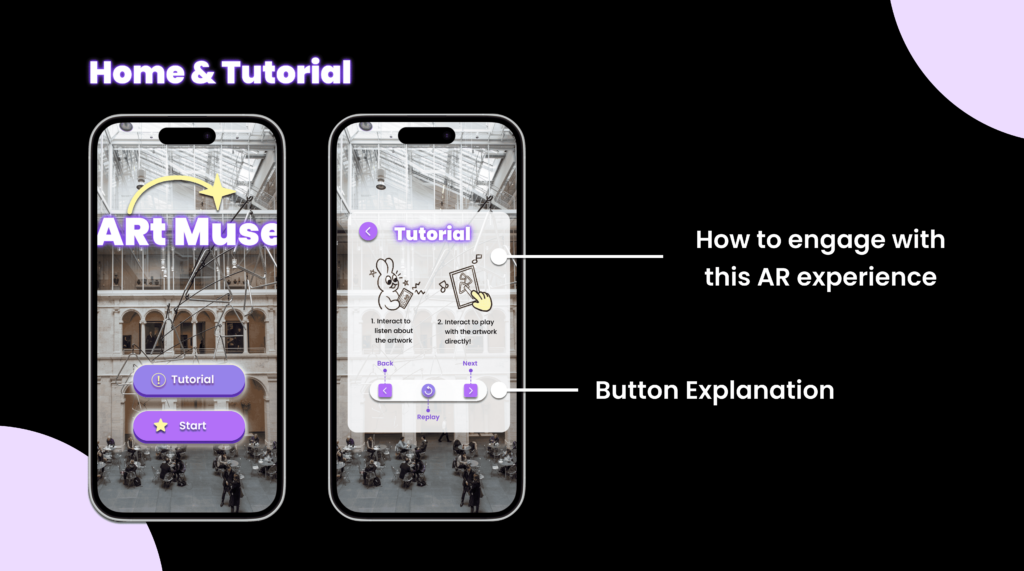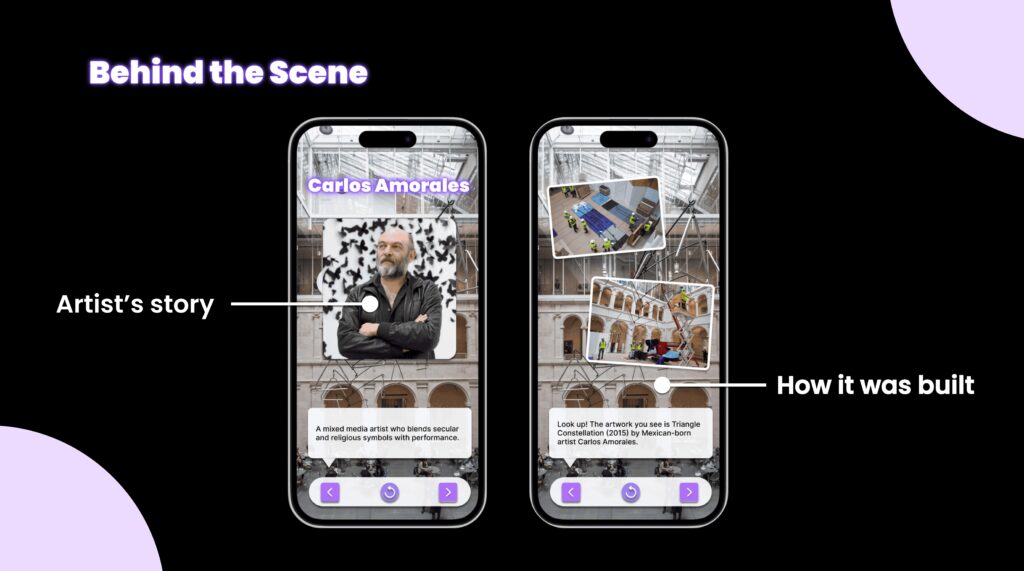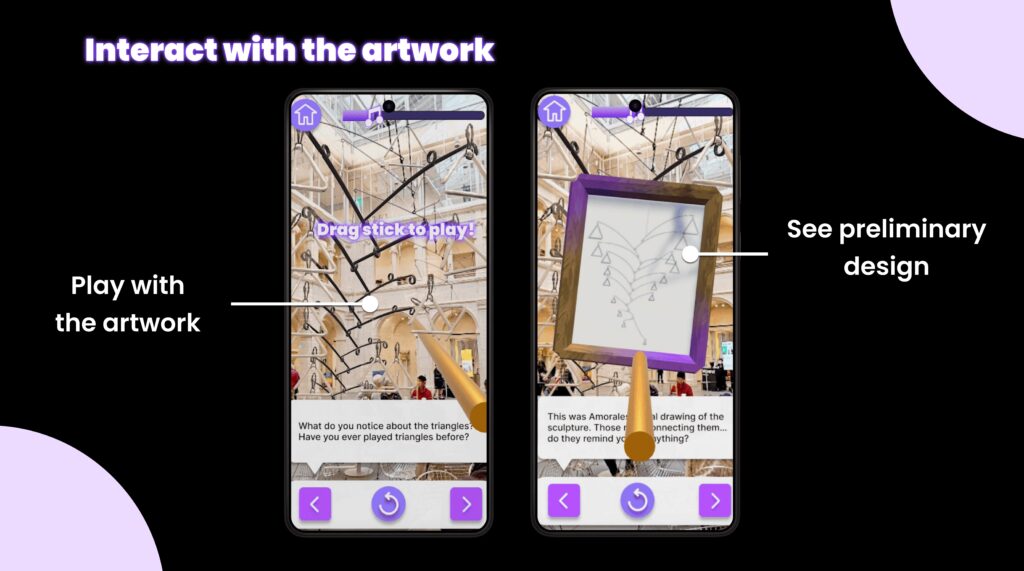Ruby Wang, Stacey Cho, Janie Ro

Art museums are often seen as formal, institutional spaces where visitors are expected to keep their distance, observe quietly, and follow a range of rules. Such restrictions can make museums feel exclusive, sometimes even uninviting. But what if we could reimagine museum education as a more whimsical and interactive experience? Not only that, how might we incorporate the physical architecture of the museum itself into a learning experience to challenge and push the limits of an “institutionalized” space? Could these approaches enhance students’ museum literacy, empowering them to engage with artworks in a more meaningful and confident way?
Meet our project ARtMuse, an interactive AR experience at the Harvard Art Museums, designed to tackle these challenges!
Design Process
Our project involves multi-level interaction across diverse fields, divided into three main sections: crafting learning modules, designing User Interface and User Experience (UI/UX), and development. Creating the learning modules involves initial drafts, consultation with experts, and content adjustments for technical viability and accessibility. The UI/UX section includes creating a User Journey Map, developing User Personas, and designing the actual interface that not only integrates the learning modules but also engages users with interactive AR elements. Finally, our developer brings everything to life, handling back-end dev, creating 3D animations, audio, combining assets, and overall ensuring the functionality.





Learning and Reflection
Working on ARtMuse has helped us see just how much potential there is in designing learning experiences for places like museums, where traditional rules often make things feel a bit too “hands-off.”
With this project, we want to share how we can transform what is traditionally a passive learning into an active exploration, sparking curiosity through playful discovery. By incorporating AR into the Harvard Art Museums, we learned that good learning design involves viewing a physical space not just as a boundary but as an interactive and imaginative canvas. Additionally, we discovered that bringing technology into these spaces can change how students interact with art, encouraging them to actively interpret, question, and engage with exhibits in a more personally meaningful way.
Image attributions:
- Video – Filmed at the Harvard Art Museum
- Featured Image – Image created by Stacey Cho, inserted background image in courtesy of the Harvard Art Museums





